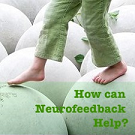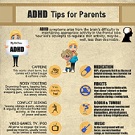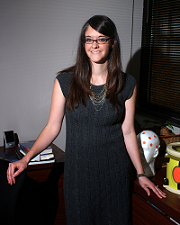Neurofeedback is a "mirror" for the brainIf you haven't noticed, I love lego brick minifig photos! If you check out the photo above, you'll see our minifig has some electrodes pasted to his head and is watching a spaceship on the screen. In real life, my clients sit in a chair in front of a computer screen and I apply three electrodes to the scalp. This part doesn't hurt, but some clients are sensitive to the process in the beginning. The computer reads the client's EEG signal (read: brainwaves) and uses that information to control what is happening on the screen. When clients play the video game you see in the photo, they watch a spaceship travel through a tunnel. The speed of the ship, the amount of exhaust they see, and the volume of the music all correspond to the EEG. It is a mirror to the brain for what it is doing. It's a little like reverse psychologyThe brain is quickly intrigued by the fact it is controlling the activity on the screen. It is swept up in the flow of "feedback" it is receiving from the video game. Occasionally, the game will "push" on the brain by showing it something else, something it is not doing. The brain follows along, but only for a moment. The game is saying, "See, you're doing this now." The brain says, "No, I'm not." and pushes back. It is our push on the brain, and the brain's push back that provide the exercise needed for the brain to learn better self-regulation. Sigfried Othmer from EEGInfo once told me, "The brain is very self-centered. It spends most of it's time talking to itself, about itself, about what it is doing." This "self-centeredness" of the brain allows us to intervene and suggest the brain do something different. Much like in weight training, we are providing the necessary resistance (or weight) for the brain to exercise itself. You don't have to "try" to make neurofeedback workAdults frequently ask me, "How do I make it work?" Kids don't seem to have this issue. They sit down and just watch what's happening. In fact, the harder you try, the longer it takes for the brain to catch on. It's a passive process, that very young children with developmental and neurological delays can do, without any help or guidance. The communication between the brain and the computer is not at a conscious level, that makes it uniquely suited to helping children with Autism, Asperger's, and ADHD. Neurofeedback doesn't have to be done foreverBecause neurofeedback is a learning and training process, once the brain has learned how to self-regulate better, it will hold onto these skills. Sustainable gains are seen with almost all clients, once there has been a sufficient amount of training. (For example, neurofeedback can help slow the decline for clients with Alzheimer's, but if training is discontinued the gain is usually lost. This is because Alzheimer's Disease is biologically based. There are still benefits, however, training must be continued for gains to be maintained.) We usually start with 20 sessions, at least once a week. We reevaluate at that point to determine if there is more work to be done or if we are finished and the client is satisfied. I want to give my clients and their parents reasonable expectations regarding progress and results. Usually clients will exceed my conservative expectations, but this is always best. What about clients with ADHD, Autism, or Asperger's?Clients with what I call "simple" ADHD will usually do well with 20 sessions. When ADHD is "simple" (i.e. not complicated by severe anxiety, a history of trauma, autism behaviors, etc.) it is fairly common to see rapid results, that are lasting with 20 sessions. However, there are always exceptions. However, clients on the Autism Spectrum almost always need more than 20 sessions. This is due to the neurodevelopmental nature of autism itself. The brain needs time to catch up developmentally and learn to self-regulate. These clients also seem to do best if we are able to taper off gradually once they have achieved better self-regulation. Of course, clients can always return for a reboot, if they need to. Sometimes clients will return for a few sessions after a big life change, such as moving to a new school, starting puberty, etc. How do I know if my child is a good candidate?I offer 30-minute consults, no charge, so that parents can make and educated decision for their family. I know that neurofeedback is not an inexpensive therapy. It is also not a quick fix. The benefits of neurofeedback are astounding: fewer meltdowns, less frustration, better communication, better sleep patterns, more interaction with others, better focus, processing, planning, and motivation. If you're in Virginia Beach, Norfolk or Chesapeake, give me a call or send me an email and let me know that you'd like to know more about what I can do to help. If you've tried neurofeedback for yourself or your child, please leave us a comment and let us know about your experience. I love to hear from readers and always answer thoughtful comments.
|
Nikki Schwartz,
|






 RSS Feed
RSS Feed
